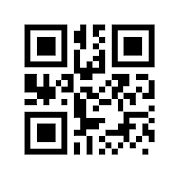MY favorite story in Erik Brynjolfsson and Andrew McAfee’s fascinating new book, “The Second Machine Age,” is when the Dutch chess grandmaster Jan Hein Donner was asked how he’d prepare for a chess match against a computer, like I.B.M.’s Deep Blue. Donner replied: “I would bring a hammer.”
Donner isn’t alone in fantasizing that he’d like to smash some recent advances in software and automation — think self-driving cars, robotic factories and artificially intelligent reservationists — which are not only replacing blue-collar jobs at a faster rate, but now also white-collar skills, even grandmasters!
Something very, very big happened over the last decade. It is being felt in every job, factory and school. My own shorthand is that the world went from “connected to hyperconnected” and, as a result, average is over, because employers now have so much easier, cheaper access to above-average software, automation and cheap genius from abroad. Brynjolfsson and McAfee, both at M.I.T., offer a more detailed explanation: We are at the start of the Second Machine Age.
The First Machine Age, they argue, was the Industrial Revolution that was born along with the steam engine in the late 1700s. This period was “all about power systems to augment human muscle,” explained McAfee in an interview, “and each successive invention in that age delivered more and more power. But they all required humans to make decisions about them.” Therefore, the inventions of this era actually made human control and labor “more valuable and important.” Labor and machines were complementary.
In the Second Machine Age, though, argues Brynjolfsson, “we are beginning to automate a lot more cognitive tasks, a lot more of the control systems that determine what to use that power for. In many cases today artificially intelligent machines can make better decisions than humans.” So humans and software-driven machines may increasingly be substitutes, not complements. What’s making this possible, the authors argue, are three huge technological advances that just reached their tipping points, advances they describe as “exponential, digital and combinatorial.”
To illustrate “exponential” they retell the story of the king who was so impressed with the man who invented chess that he offered him any reward. The inventor suggested rice to feed his family. He asked the king to simply place a grain of rice on the first square of a chessboard and then have each subsequent square receive twice as many grains as the previous. The emperor agreed until he realized that 63 instances of doubling yields a fantastically big number, even starting with one grain — like 18 quintillion grains of rice, once you finish the second half of the chess board.
The authors compare this second half of the chessboard to Moore’s Law about the relentless doubling of digital computing power about every two years. Unlike the steam engine, which was physical and doubled in performance every 70 years, computers “get better, faster than anything else, ever,” says Brynjolfsson. Now that we’re in the second half of the digital chessboard, you see cars that drive themselves in traffic, Jeopardy-champion supercomputers, flexible factory robots and pocket smartphones that are the equivalent of a supercomputer of just a generation ago.
Advertising
Now add the spread of the Internet to both people and things — soon everyone on the planet will have a smartphone, and every cash register, airplane engine, student iPad and thermostat will be broadcasting digital data via the Internet. All this data means we can instantly discover and analyze patterns, instantly replicate what is working on a global scale and instantly improve what isn’t working — whether it is eye surgery techniques, teaching fractions or how best to operate a G.E. engine at 30,000 feet. Suddenly, the speed and slope of improvement, they argue, gets very fast and steep.
Combinatorial advances mean you can take Google Maps and combine them with a smartphone app like Waze, through which drivers automatically transmit traffic conditions on their routes by just carrying their phone in their car, and meld both into a GPS system that not only tells you what the best route is to your destination but what the best route now is because it also sees all the traffic everywhere. Instantly, you’re the smartest driver in town.
Put all these advances together, say the authors, and you can see that our generation will have more power to improve (or destroy) the world than any before, relying on fewer people and more technology. But it also means that we need to rethink deeply our social contracts, because labor is so important to a person’s identity and dignity and to societal stability. They suggest that we consider lowering taxes on human labor to make it cheaper relative to digital labor, that we reinvent education so more people can “race with machines” not against them, that we do much more to foster the entrepreneurship that invents new industries and jobs, and even consider guaranteeing every American a basic income. We’ve got a lot of rethinking to do, they argue, because we’re not only in a recession-induced employment slump. We’re in technological hurricane reshaping the workplace — and it just keeps doubling.










